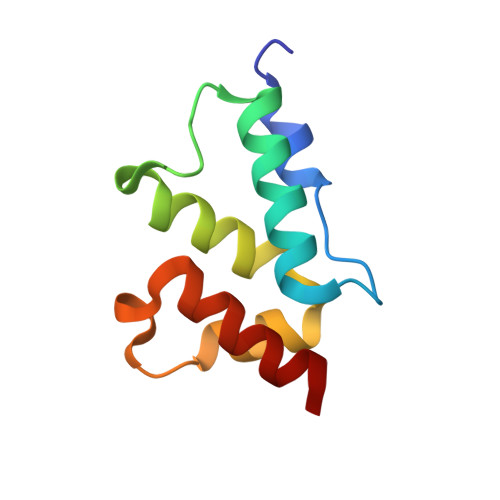Structure and architecture of immature and mature murine leukemia virus capsids.
Qu, K., Glass, B., Dolezal, M., Schur, F.K.M., Murciano, B., Rein, A., Rumlova, M., Ruml, T., Krausslich, H.G., Briggs, J.A.G.(2018) Proc Natl Acad Sci U S A 115: E11751-E11760
- PubMed: 30478053
- DOI: https://doi.org/10.1073/pnas.1811580115
- Primary Citation of Related Structures:
6GZA, 6HWI, 6HWW, 6HWX, 6HWY - PubMed Abstract:
Retroviruses assemble and bud from infected cells in an immature form and require proteolytic maturation for infectivity. The CA (capsid) domains of the Gag polyproteins assemble a protein lattice as a truncated sphere in the immature virion. Proteolytic cleavage of Gag induces dramatic structural rearrangements; a subset of cleaved CA subsequently assembles into the mature core, whose architecture varies among retroviruses. Murine leukemia virus (MLV) is the prototypical γ-retrovirus and serves as the basis of retroviral vectors, but the structure of the MLV CA layer is unknown. Here we have combined X-ray crystallography with cryoelectron tomography to determine the structures of immature and mature MLV CA layers within authentic viral particles. This reveals the structural changes associated with maturation, and, by comparison with HIV-1, uncovers conserved and variable features. In contrast to HIV-1, most MLV CA is used for assembly of the mature core, which adopts variable, multilayered morphologies and does not form a closed structure. Unlike in HIV-1, there is similarity between protein-protein interfaces in the immature MLV CA layer and those in the mature CA layer, and structural maturation of MLV could be achieved through domain rotations that largely maintain hexameric interactions. Nevertheless, the dramatic architectural change on maturation indicates that extensive disassembly and reassembly are required for mature core growth. The core morphology suggests that wrapping of the genome in CA sheets may be sufficient to protect the MLV ribonucleoprotein during cell entry.
Organizational Affiliation:
Structural and Computational Biology Unit, European Molecular Biology Laboratory, 69117 Heidelberg, Germany.















